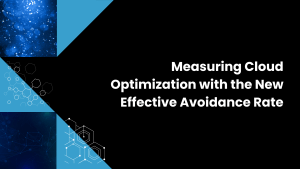SAS continued its efforts to adapt to the changing data management landscape this week with the announcement that a number of its advanced analytics and business intelligence (BI) software packages are now available on Amazon Web Services (AWS). The announcement is in keeping with SAS’s move to better integrate its analytics capabilities with new and emerging Big Data databases and processing engines, as well as a recognition of the increasing importance of cloud services in the business intelligence and analytics markets.
SAS offerings, including SAS Visual Analytics and SAS Business Intelligence, are now available in conjunction with AWS RedShift, the cloud service giant’s popular high performance data warehouse service, and AWS Elastic MapReduce, AWS’s Hadoop infrastructure service. In addition, SAS Visual Analytics is now available via AWS TestDrive, a sandbox environment allowing users to try software before they buy.
SAS has been well known in the advanced analytics field since its founding in 1976, with its software in wide use by statisticians and business analysts in financial services, healthcare and manufacturing. The company later introduced less sophisticated business intelligence and data visualization packages to appeal to business users. The private Cary, N.C.-based company realized a reported $3.02b in revenue in 2013.
The company is feeling several pressures on its business, however. First, competing analytics tooling and languages are gaining in popularity, particularly among up-and-coming business analysts and data scientists. In particular, R, an open source programming language for advanced analytics, is increasingly the language of choice for younger analytics practitioners who are exposed to R in university programs.
Second, one of the pillars of Big Data is that practitioners move the compute to the data, rather than the data to the compute. Big Data is heavy, and practitioners want to reduce data movement as much as possible. Another widely accepted Big Data notion is that sampling is dead. Big Data platforms such as Hadoop make it possible to analyze very large data sets, removing the need to run analysis on just sample data due to performance constraints. Traditionally, SAS practitioners move sample data from the database where it resides to a separate SAS environment. This approach is untenable in Big Data environments.
SAS is taking steps to address both pressures. It has added R functionality to its various packages, enabling practitioners to make R calls directly from SAS environments. This is a reasonable short-term approach and a good example of SAS responding to the demands of its customers. Whether this is a viable long-term strategy is another question. As R, Python and other open source analytics tools and languages gain in popularity, simply integrating them with SAS won’t stem the tide of practitioners abandoning the proprietary SAS approach or not considering it as an option in the first place.
SAS is also adapting to the tenants of Big Data via in-database analytics. SAS debuted in-database analytics with data warehouse stalwart Teradata in 2007. In-database analytics involves embedding analytic logic and functionality into the datasource in question, eliminating the need to move data to a separate analytic environment, which is cumbersome, time-consuming and expensive for practitioners. In-database analytics, therefore, results in lower time-to-insight and the added benefit of reducing data mart sprawl.
SAS is in the process of extending the in-database analytics approach it pioneered with Teradata to Hadoop and other emerging Big Data platforms. The company established a partnership with Cloudera in early 2013 and later that year introduced the SAS/ACCESS Interface to Impala to enable practitioners to apply SAS analytics and visualizations to Hadoop-based data via Cloudera’s SQL-on-Hadoop query engine. SAS is also working with Hortonworks to better integrate its analytics capabilities into HDP via YARN.
With this week’s announcement, SAS is similarly bringing its analytics software to AWS Big Data analytics environments. Rather than expecting practitioners to move data out of AWS to a separate, usually on-premise SAS environment, SAS is acknowledging it must go to where the data lives, even if that’s in the public cloud. The cloud is already an important element in existing Big Data analytics projects, with 58% of Big Data analytics practitioners reporting they use the public cloud for at least one aspect of their respective projects in a recent Wikibon survey. Wikibon expects practitioners to increasingly look to the public cloud to launch new Big Data analytics projects due to the ease of spinning up new analytic environments and for its inherent ability to abstract await he complexities of deploying and maintaining complex Big Data technology.
Action Item: SAS must continue integrating its analytics and business intelligence functionality with emerging Big Data databases and processing engines. In order to differentiate from increasingly popular open source analytics approaches, it must provide added value by making the process of using its software packages with Big Data engines as seamless as possible. Wikibon expects SAS to remain an important player in the analytics market for the foreseeable future but increasingly it will live side-by-side with competing approaches.


